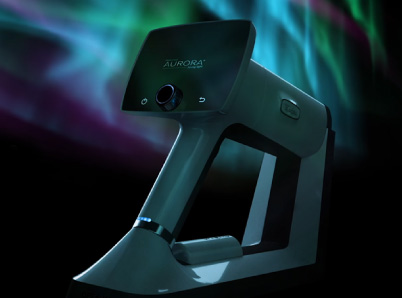Shortly into 2020, the whole world experienced a shift in normal day-to-day functions with the appearance of COVID-19. The healthcare system had to completely change how patients are taken care of. Since COVID-19 is a contagious, airborne virus, the old way of seeing patients had to change.
Certain medical professions, like ophthalmology, require close contact with patients for an extended length of time. Ophthalmologists are performing close eye examinations on their patients, so COVID-19 has created many challenges for providing safe care.
One major change needed was protection for both the doctors and their patients during slit lamp examinations. When barrier shields for slit lamps were on backorder, something needed to be done. Dr. DeBoer is a third-year resident in ophthalmology at the University of Southern California, Roski Eye Institute. Along with a few other physicians, he created and implemented protective slit-lamp barrier shields to increase protection for doctors and patients.
Dr. DeBoer didn’t stop at barrier shields and looked for further solutions for safely examining patients. He wanted a fundus camera that he could take with him to ER and COVID-19 consults, while also still being in full personal protective equipment (PPE).
On his search, he found Optomed Aurora, a handheld fundus camera. He’s now using the Aurora to image patients without dilation, saving time, and limiting contact with COVID-19 positive patients. He can image the back of the eye safely while still protecting himself with full PPE. This article is Dr. DeBoer’s personal experience using the Aurora camera during the COVID-19 pandemic.
COVID Challenges in Ophthalmology
Essentially all duties of an ophthalmologist require close contact with their patients. As research continues to evolve on COVID-19, it’s been reported that ophthalmologists are at a higher risk due to close proximity and the nature of procedures.1 Examinations, injections, lasers, and surgeries all demand close contact with patients.
PPE has been implemented since knowledge of COVID-19. Starting with masks and slit-lamp barriers, it quickly evolved to full-on bodysuits and CAPRs, especially in the ER. Full PPE causes difficulty for ophthalmologists in viewing the retina.
Ophthalmologists are having a harder time obtaining a clear crisp view of the retina during slit-lamp examinations and indirect ophthalmoscope examinations. A solution to this problem for Dr. DeBoer has been the Optomed Aurora handheld fundus camera.
“The Aurora is portable, takes good fundus photos, you don’t have to dilate, and it’s very easy to clean after use.” Dr. DeBoer
Saving Time With Patients Who Are COVID-19 Positive
Dilation used to be an inconvenience to patients and a time-limiting step for ophthalmologists. As COVID emerged it became more of a safety concern. Dilation adds more time for office visits, emergency consults, and creates prolonged contact between doctors and patients. The Aurora allows retinal imaging without the need for dilation, while still providing quality images to assess the retina.
“In my opinion, on patients who are actively contagious with COVID, I think being fully gowned with a CAPR taking images with Aurora, seems a lot safer than doing a dilated fundus exam only wearing N95 masks and an indirect.” Dr. DeBoer
Dr. DeBoer has had cases where he was able to take images using Aurora on patients with diabetic retinopathy and active COVID in the hospital. This has allowed him to avoid dilation when the quality retinal images can show him a new-onset sub hyaloid hemorrhage due to diabetes, all while remaining in full PPE (Figure 1).
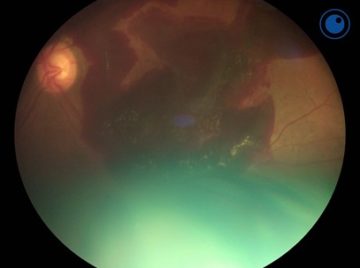
Figure 1: New sub hyaloid hemorrhage from COVID positive diabetic patient.
Limiting Unnecessary Contact with Patients During the Pandemic
As studies have shown, COVID-19 remains on some surfaces for up to three days and more importantly suspended in the air for at least 3 hours.2 This creates added challenges in ophthalmology clinics due to small exam rooms and waiting rooms.
Using the Aurora to quickly image patients without dilation is a huge benefit to clinic flow and efficiency. It could save ophthalmologists from performing so many slit lamp examinations that take time to adjust the chinrest and make sure the patient is comfortable.
This equates to:
- Less time in small exam rooms
- Less time in waiting areas
- Less contact from patients touching office surfaces like the slit lamp and furniture
Ophthalmologists know their patients’ ocular history and will be able to quickly determine who truly needs dilation or the patients where a fundus image will work without comprising care. Aurora gives ophthalmologists options in the office and outside consults.
Handheld Portability with Aurora Allows Imaging Anywhere
Having a handheld fundus camera like the Aurora makes the busy lives of ophthalmologists easier. Transferring the device is simple and now with COVID-19, there’s an added benefit of limiting contact with positive patients.
ER Consults
Ophthalmologists are called into emergency consults or COVID consults frequently and using the Aurora can make this part of the job more convenient. Consults in the ER are faster using the Aurora because dilation isn’t required to have quality images of the retina. Refer to Figures 2-4 for examples of a normal retina and one found to have disc edema.
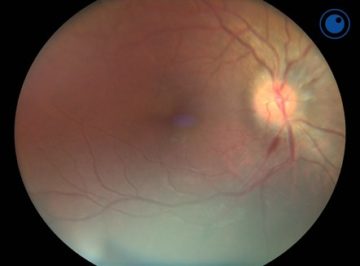
Figure 2: Normal appearing retina and disc.
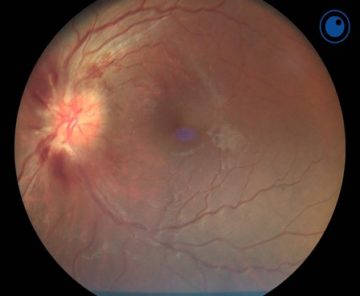
Figure 3: Disc edema noted on macula focused image.
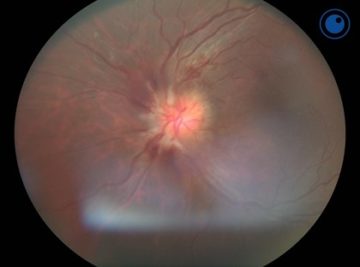
Figure 4: Focused image of disc highlighting edema.
Before Aurora, ophthalmologists would have an N95 mask on, waiting for dilation, and using an indirect. All of this amounts to more risk and exposure to COVID-19. Using Aurora ophthalmologists can go home to their families without worrying about quarantine because they’re in full PPE for the entirety of the exam.
Another area in the ER where Aurora can be beneficial is with emergency consults. Emergency room doctors aren’t as skilled in the field of ophthalmology and viewing the retina. Dr. DeBoer believes Aurora could help facilitate referrals from the emergency room to ophthalmologists.
“I think Aurora could be utilized in the emergency department. The current standard of care is ultrasound, which isn’t easy to interpret, especially if you aren’t an ophthalmologist. This could improve referrals from the emergency department to ophthalmologists.”
Incarcerated Population
Aurora allows for ease and speed for incarcerated consults as well. Prison or jail consults add a unique challenge during COVID due to the difficulty to maintain social distancing. Experts believe that overcrowding, together with lack of testing, inadequate infection control measures, and a shortage of basic supplies, has fueled massive outbreaks in US correctional facilities.3
Using Aurora will save time and allow ophthalmologists to travel to the facilities themselves in full PPE, as opposed to having inmates come into clinics or offices exposing more people. This creates peace of mind for the ophthalmologist while in PPE in a higher risk area.
Pediatric Ophthalmology
The Aurora also can benefit specialty areas in ophthalmology such as pediatrics. In pediatrics, for example, Dr. DeBoer states, “ I want to implement Aurora more into pediatrics because dilated exams on kids are challenging. They don’t like eye drops or lights in their eyes and it can be traumatic for them. I’m interested in using the Aurora more for kids as a general screening because I think this could make it easier and faster for our pediatric population.”
Having the portability with Aurora can be useful when pediatric ophthalmologists need a view of the retina but are not performing cycloplegic refraction. The Aurora is easier to take images of children without maneuvering around a large stationary machine. Skipping dilation while still having a crispy clear view of the retina can save time for the doctor, patient, and families in pediatric care.
The Aurora Is Easy to Use
Sometimes new technology brings large learning curves but the Aurora isn’t one of them. The camera is very user friendly with a clear 4” TFT-LCD display for easy viewing and the Optomed joystick allows for quick maneuvering on the main menu.
When speaking to Dr.DeBoer he stated, “it normally only takes practice on one patient for a new resident to work the camera, it’s very fast and easy to use.” Now is not the time to have a huge learning curve on a helpful device and the feedback from Aurora users reminds us that easy technology does exist.
Images are obtained faster than most standard machines because not only is the Aurora easy to use, it’s easy for the patient. Patients don’t have to have multiple adjustments or their head in awkward positions, the user moves the camera and images the eye easily. This is helpful with COVID patients who are on ventilators – which can be extremely challenging obtaining views of the retina while in PPE.
The camera is also very easy to clean in between patients, which is now more important than ever. Simply remove the eye cap and disinfect. Then you’re ready for the next patient and image to be captured.
Ophthalmologists Can Benefit From Optomed Aurora Handheld Fundus Camera
COVID-19 has created many challenges and difficulties in ophthalmology. Limited space in clinics and exam rooms are adding to the risks of COVID-19. Waiting times for dilation can lead to prolonged contact with potentially COVID-19 infected patients or when seeing patients in the hospital.
Optomed Aurora can alleviate these challenges by having a reliable, non-mydriatic, easy to transport, handheld fundus camera that provides high-quality images. The device will help save time and limit contact between patients and doctors. High-quality retinal images allow doctors to determine if dilation is truly required on COVID-19 positive patients.
Having a handheld fundus camera that’s easy to use is just what ophthalmologists need in this unique time in healthcare. Patients will be more comfortable without needing to be placed into a stationary machine that could take longer to adjust. The Aurora also allows doctors to be protected in full PPE while having a detailed view of the retina with images obtained from the camera.
While Aurora is extremely helpful during the COVID-19 pandemic, it will be used for years to come to improve eye care. Aurora will allow for easier exams for kids, improved referrals from the ER, better screening for diabetics, and potentially less time with violent incarcerated patients. Optomed Aurora is here to stay and help eye care professionals everywhere.
For more information on the Optomed Aurora click here.
